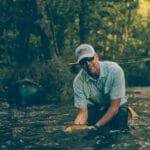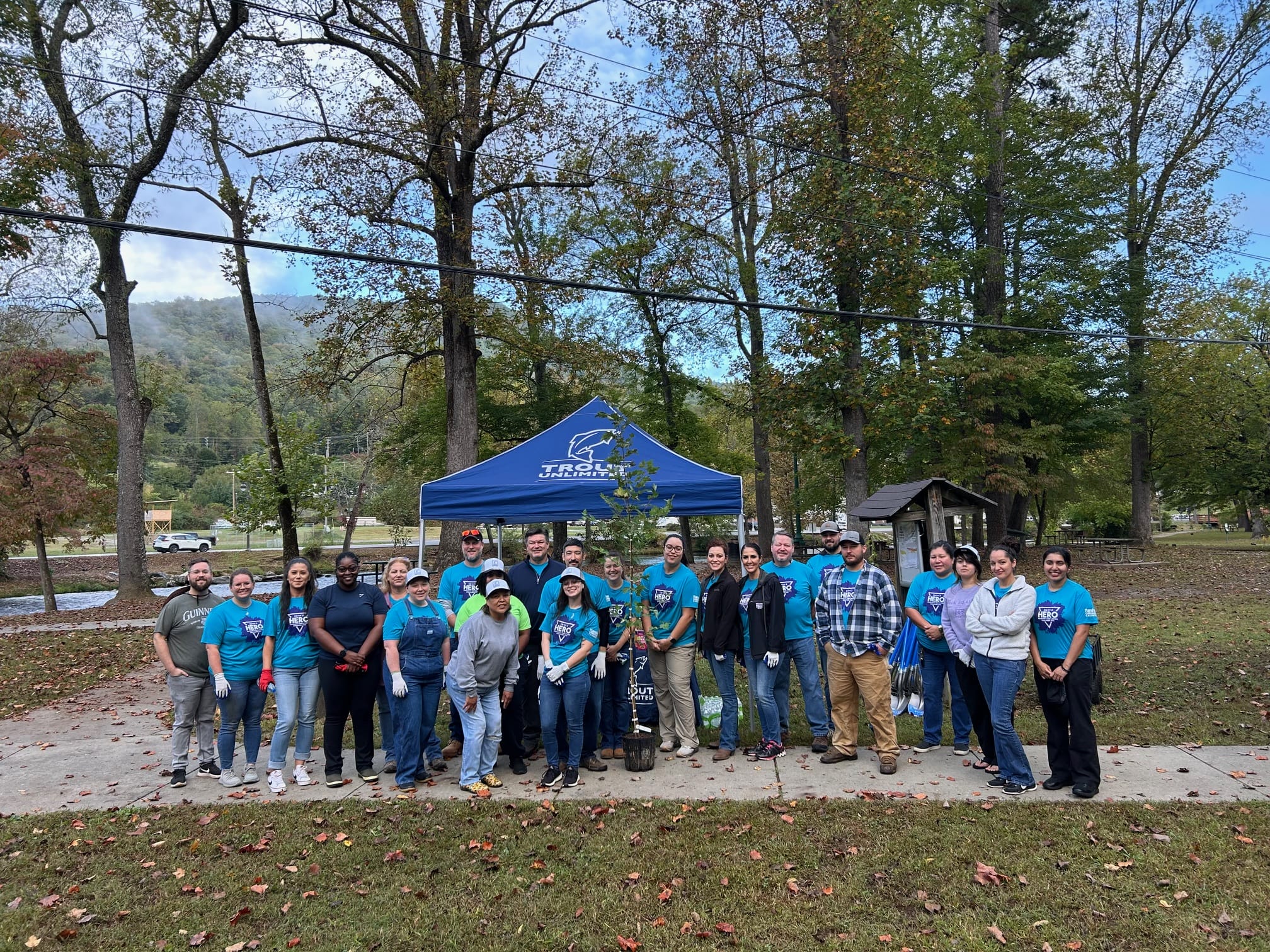Jay Hawthorne was enjoying a tour of a Kentucky bourbon trail with his wife and another couple when it became clear that Hurricane Helene was going to hit the inland Southeast.
The group managed to make it back to Madison County, N.C., where Hawthorne and his wife watched the French Broad River rage from their home well above the river.
“The water was up over a railroad track that is normally 150 yards from the river and probably 15 to 20 feet higher than normal,” said Hawthorne, a longtime TU volunteer leader. “And then you start seeing things go down the river: houses, cars, RVs.”
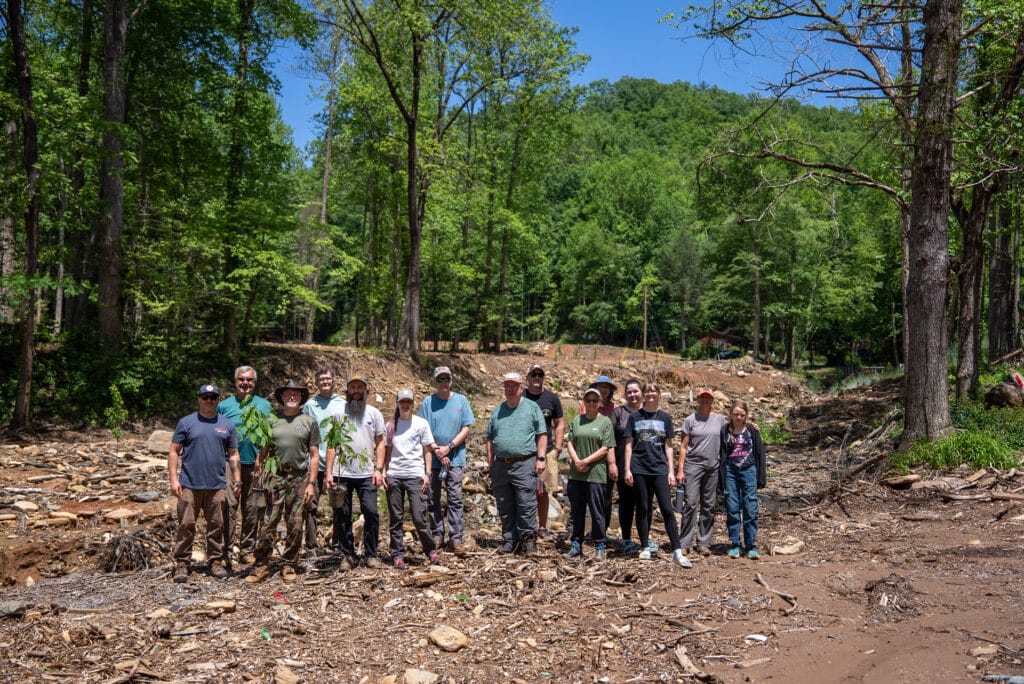
It was clear this was more than just another storm, one that would see communities rally to address needs both big and small and short-term and long-term.
The aftermath of Helene: levels of response
A year after Hurricane Helene’s devastation, Hawthorne is among those both looking back at the response and action in the aftermath of the storm while also looking ahead knowing that recovery is just beginning.
A member of Trout Unlimited’s Land O’ Sky Chapter, Hawthorne said he and chapter members spent the days immediately after the storm working on pressing needs in the town of Marshall, which suffered complete inundation by flood waters from the French Broad.
“It was mostly shoveling mud,” he said. “And when you got the mud out, you’d start tearing out the sheetrock and even ceiling tiles since the water got to 27 feet above street level in the town.”
Hawthorne said there was no way to account for the hours chapter members dedicated to immediate response. Many TU members worked dozens of days in those early months, adding to the almost incomprehensible amount of time community volunteers have dedicated to post-storm efforts across the region.
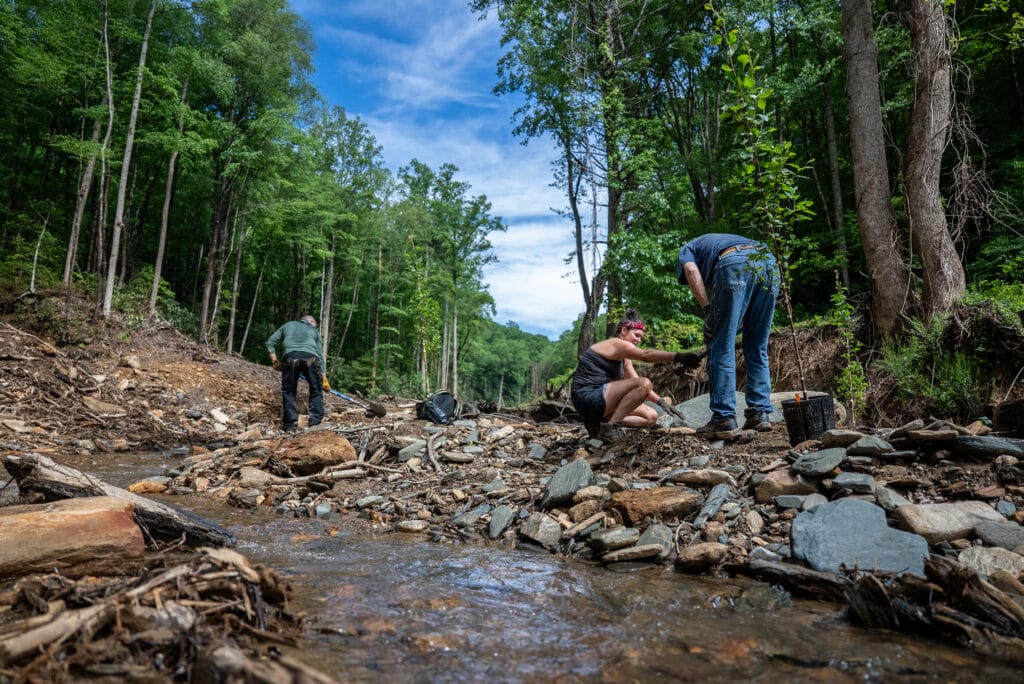
Up the road a bit in eastern Tennessee, TU’s Overmountain Chapter’s work started almost immediately when the chapter teamed with United Way for a cleanup in the community of Roan Mountain just days after the storm.
“Our ‘First Saturday Fishing Days’ have become ‘First Saturday Cleanup and Fishing Days,’” said chapter treasurer Ryan Turgeon. “Through March we had 3,055 volunteer hours.”
An evolving approach to disaster recovery
TU aquatic resiliency scientist Jordan Fields said there is a risk that post-flood cleanup and restoration efforts, well-intentioned as they may be, can exacerbate damage to rivers and riparian areas.
“The knee jerk response to a flood can be to discipline the river, to put it in a straitjacket by building berms and levees, which turns a river from something that’s connected to a floodplain to a ditch where there’s nowhere for flood waters to dissipate energy,” Fields said. “Instead, it’s a runaway train that’s eventually going to create flooding downstream that’s far more catastrophic than it would have been.”
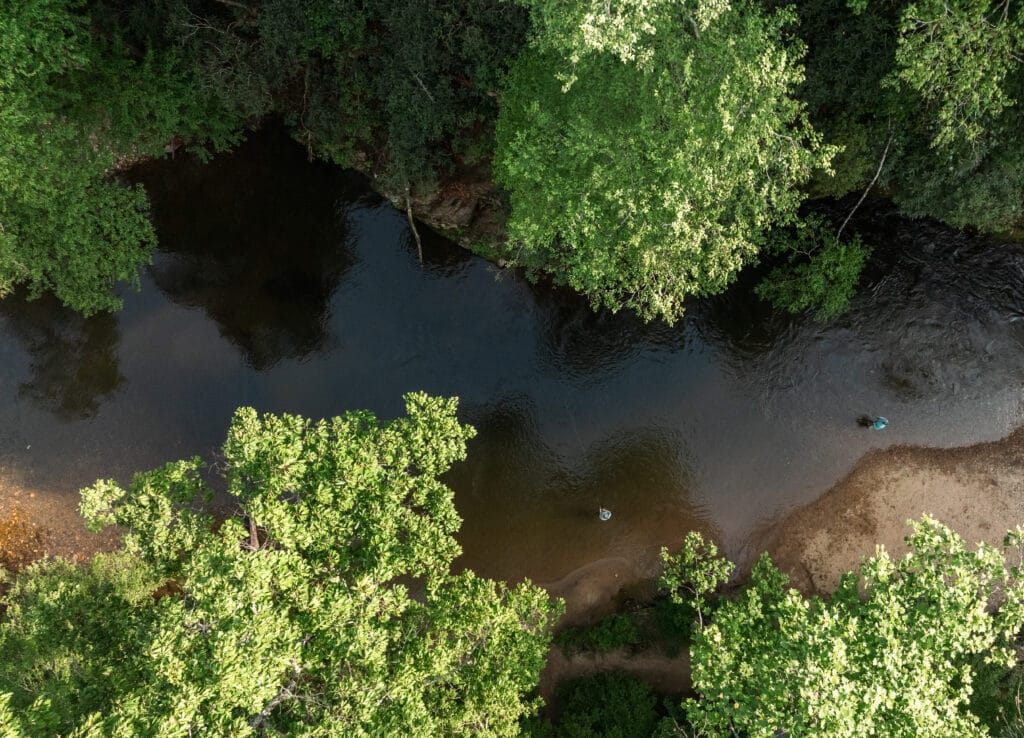
In the Northeast, TU has worked with municipalities to provide technical assistance and guidance on the good and bad of post-flood work. Building those long-term relationships with local stakeholders is the key to seeing those practices put to work.
“Me flying in and saying, ‘Hey, do this!’ is not the way to do it.” Fields said. “That’s why it’s a huge advantage to have people living in the watershed who can share information about how TU has restored flood-damaged rivers and be able to show examples of flooding risks mitigated in other areas.”
Fields said floods can be an impetus toward change for the good.
“The moment after a flood is both a moment of extreme opportunity and extreme vulnerability,” Fields said. “We have an opportunity to rewrite our relationship with rivers and it’s helpful to have people in place to say, ‘Hey, let’s hold off on the bulldozers and dump trucks if we can.’”
Planning and executing those major restoration projects takes time and TU’s staff have been collaborating with municipalities as that work is beginning to take shape.
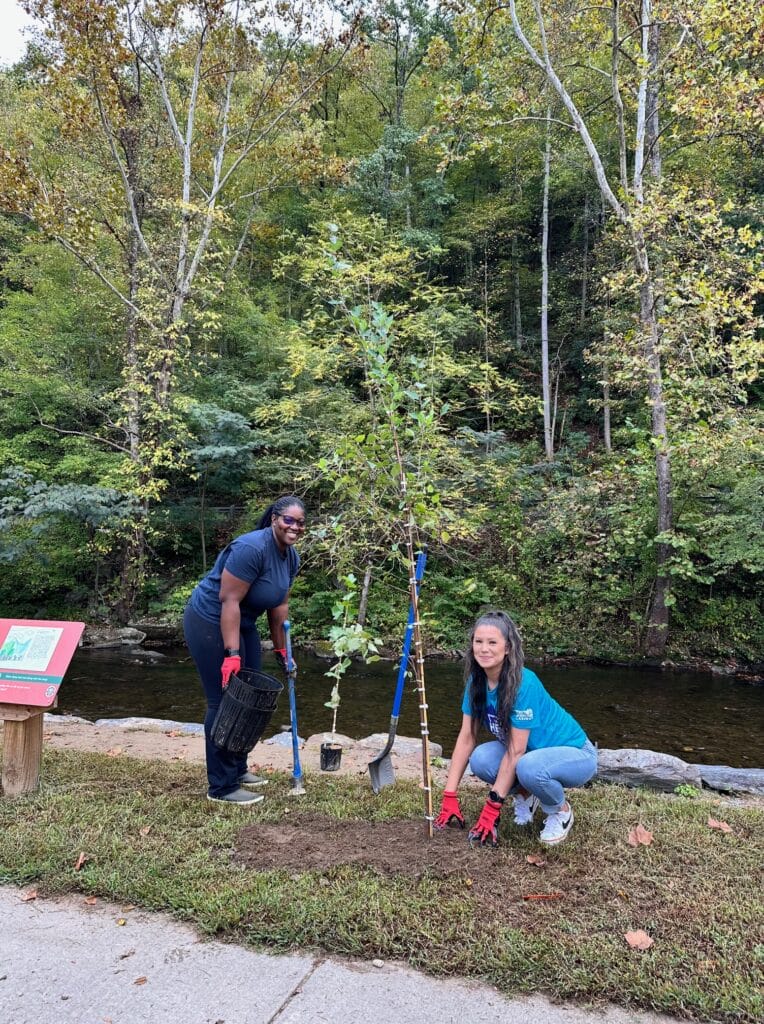
What does post-disaster restoration actually look like?
A major need is to address areas where roads cross streams. That could be a bridge, but on secondary roads those streams often pass under roads though culverts. If that culvert is not large enough to handle high water events — which are becoming more frequent and more severe as the climate warms — the road is at risk for flood damage.
Replacing an undersized culvert can not only reduce risks to road infrastructure, but it can also reconnect stream segments divided when the lower end of the culvert becomes “perched” over the stream.
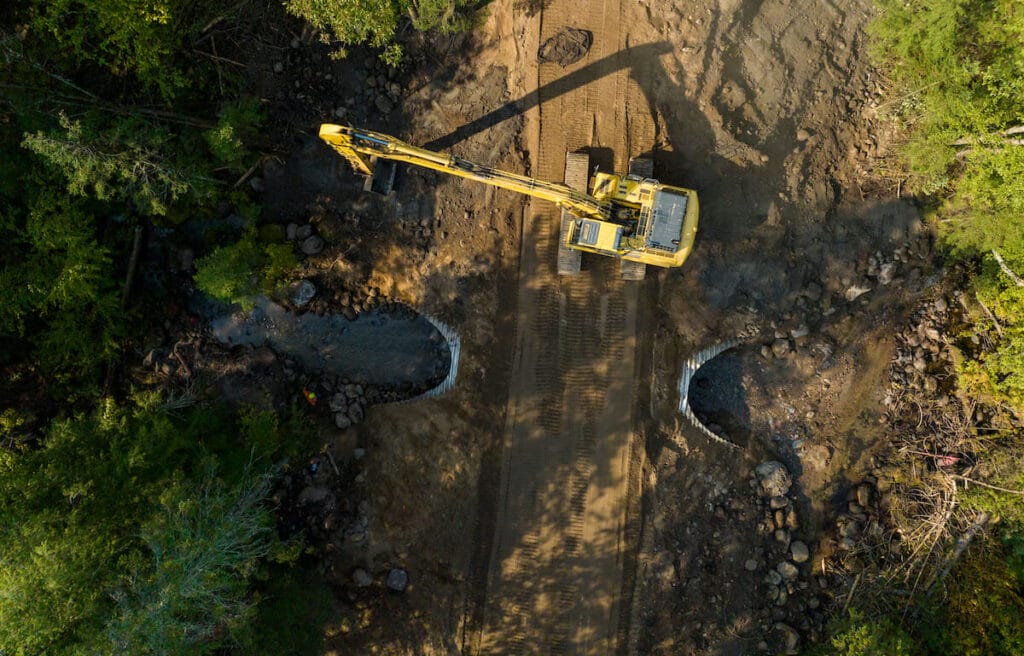
Stream restoration can include adding fallen trees to increase stream complexity, rebuilding natural stream meanders and tapering stream banks to reconnect the stream to its floodplain. Just like with addressing undersized culverts, that stream restoration work is not only good for flood resiliency, but also great for fish.
“Trout Unlimited is really good at emphasizing that there is a future where we have healthy rivers and healthy communities,” Fields said. “It’s not one or the other.”
Looking ahead
As he surveyed damage across Tennessee and North Carolina in the days and weeks after Helene, TU staffer Jeff Wright knew that recovery wouldn’t take weeks or months; it would take years.
“Our first step was, ‘What can we do right now?’” said Wright, TU’s Southern Appalachian program manager. “We’re still in a little bit of that right now.”
But there is also more clarity about the scope of the damage, allowing municipalities and other landowners to set priorities.
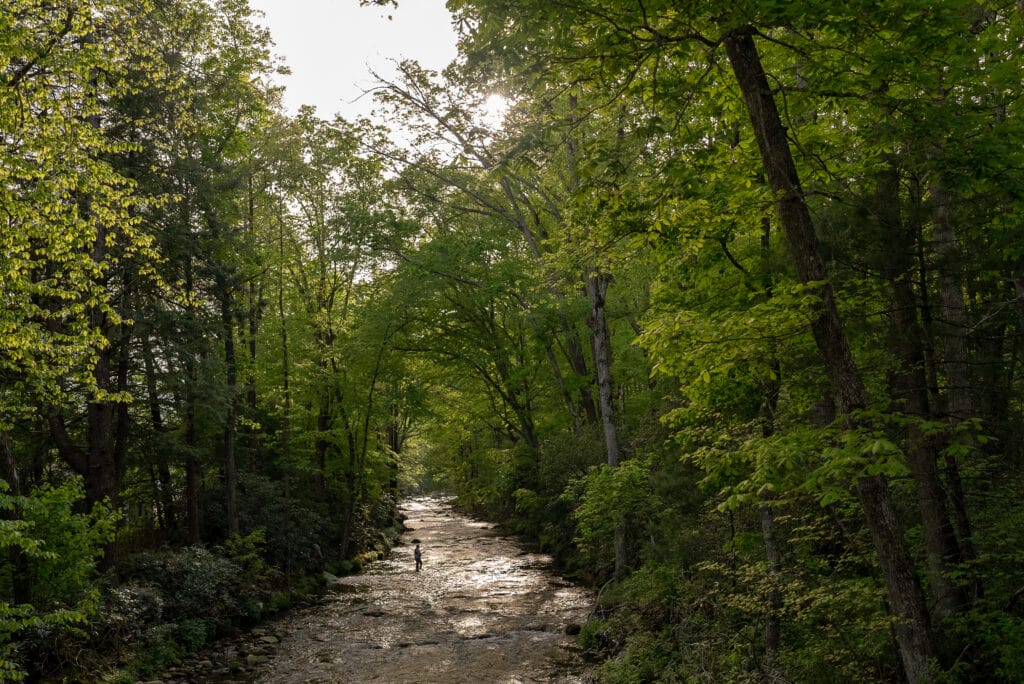
Trout Unlimited recently inked agreements to partner with one of the region’s key landowners — the U.S. Forest Service — in restoration work across national forests in Georgia and North Carolina.
“TU is a longstanding, trusted and proven partner of the Forest Service and provides unique knowledge, skills and abilities to complete the work outlined in this agreement,” the North Carolina contract states. “TU is connected to communities through local chapters and is the leading specialist on low cost and innovative watershed restoration approaches. A partnership approach with TU can lead to expanded watershed scale restoration opportunities benefiting local communities because of their connection to the members that create the outdoor recreation economy.”
The work will fall within four restoration areas of focus:
- road and trail maintenance or decommissioning to restore or maintain water quality;
- soil productivity, habitat for wildlife and fisheries, or other resource values;
- watershed restoration and maintenance;
- restoration and maintenance of wildlife and fish habitat.
TU is among several nonprofits serving as force multipliers in the Forest Service’s long-term Helene recovery plans.
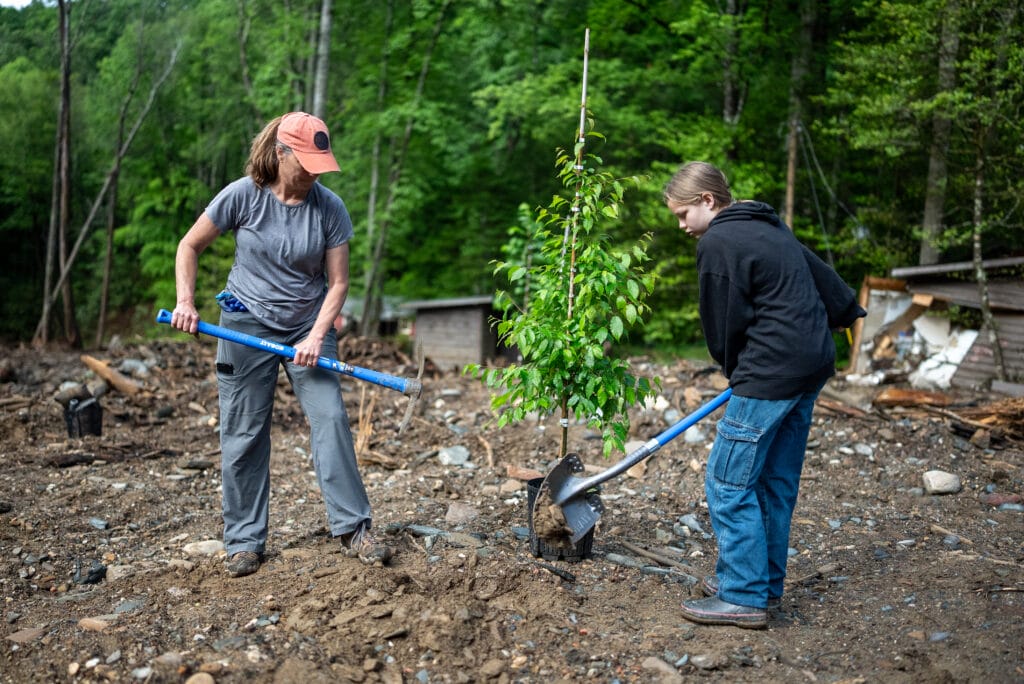
The North Carolina agreement is for 10 years and the Georgia one covers a five-year funding cycle, driving home the fact that this will be a long road. The plans call for replacing 67 road-stream crossings, rehabilitating 6,000 feet of road and restoring 4,000 feet of stream.
“It’s a long process,” Wright said. “A lot of the infrastructure was built to handle storms but maybe not the tropical storms that have been coming through more frequently. Hopefully the work we do will not only help repair things but help prepare for future intense storms.”
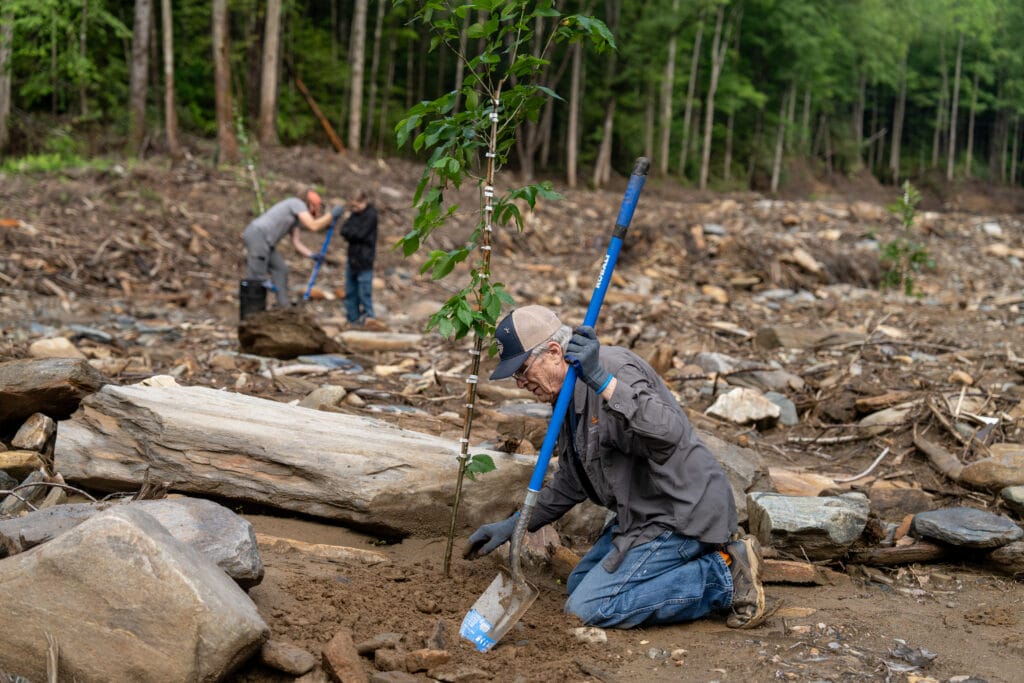
Addressing acute needs
In the meantime, there have been plenty of short-term opportunities
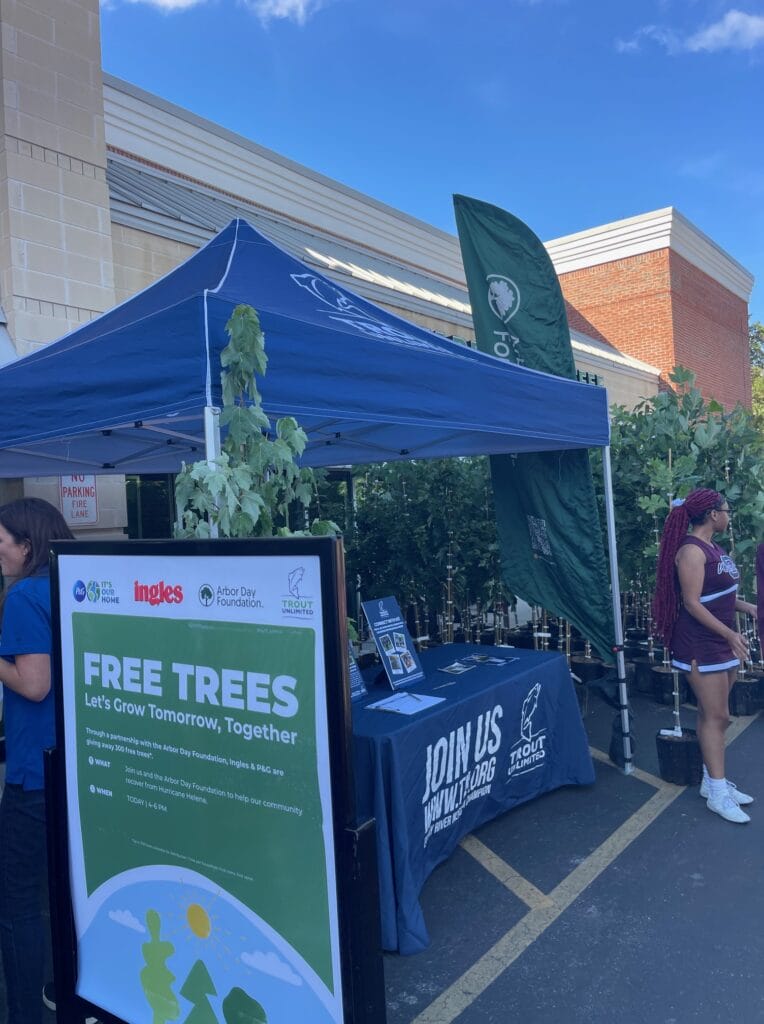
A clear need was to start working to shore up devastated riparian corridors, in part to get ahead of future erosion and also to jumpstart restoration of stream-shading riparian canopy.
With support from Tractor Supply Company Foundation, the Arbor Day Foundation, and companies like Target, International Paper, Procter & Gamble, Ingles Markets and Caesar’s Entertainment, TU has been able to purchase nearly 4,500 native tree saplings. Groups of TU members and supporters have gathered for formal tree planting events along streams and have hosted tree giveaways for residents.
At a recent giveaway in Black Mountain, N.C., high school cheerleaders in their uniforms were among the volunteers cheerfully handing out saplings.
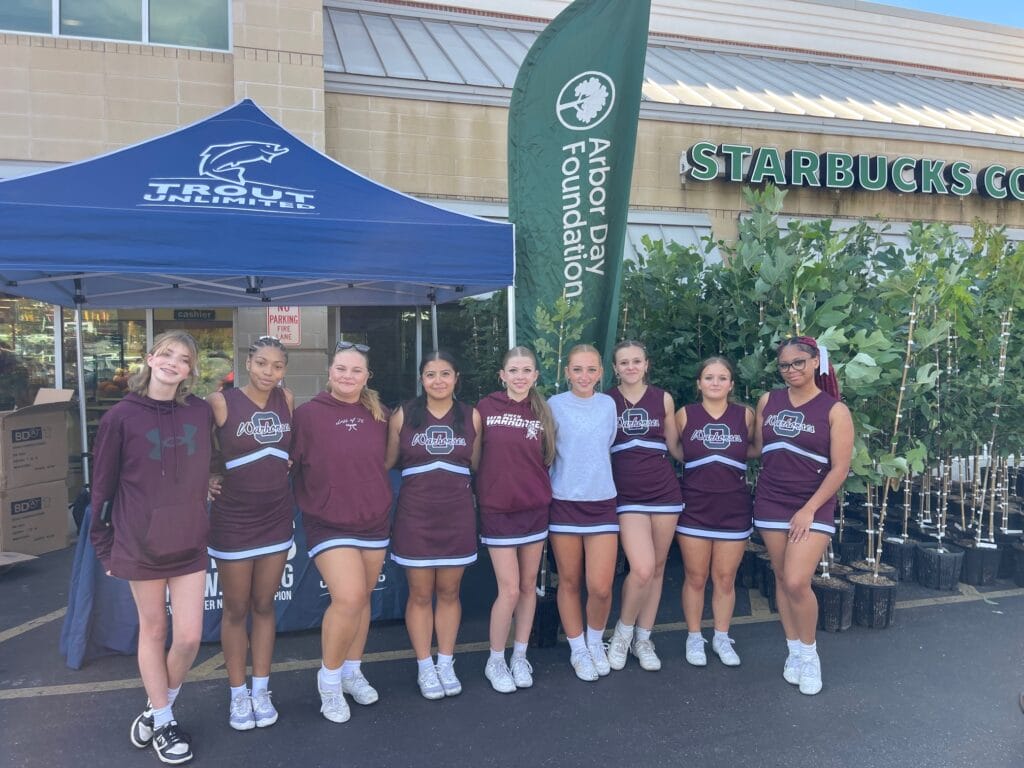
TU’s senior director of engagement Jeff Yates said that the tree plantings and giveaways serve a dual purpose of helping rivers recover but also helping people recover.
“It’s empowering,” he said. “It gives people a chance to take back what the storm took away from them. And that’s equally important as what we’re doing to help ecosystems recover and repair roads.”
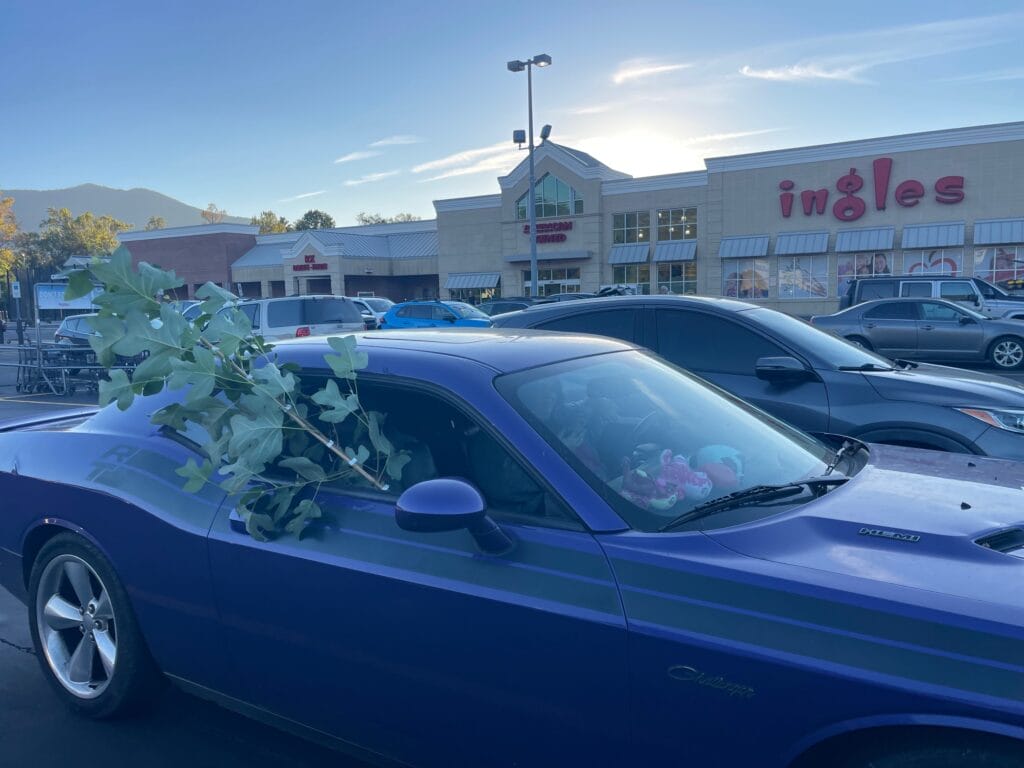
A grant from the Arbor Day Foundation, with support from Truist Charitable Fund, will help purchase more than 7,000 additional trees. In the spring, TU will hold its Southeast Regional Rendezvous in Black Mountain, with a large tree-planting event planned for the Sunday of that weekend. These trees will help restore riparian buffers and make floodplains more resilient to future flooding.
The Overmountain Chapter has been a key player in the tree plantings and giveaways and will help with upcoming giveaways in Black Mountain and Roan Mountain. Turgeon also said the chapter has been in discussions with the Tennessee Wildlife Resources Agency about helping with upcoming streambank restoration project needs.

“We know there will be ongoing needs and we’re enthusiastic about helping as much as we can,” he said.
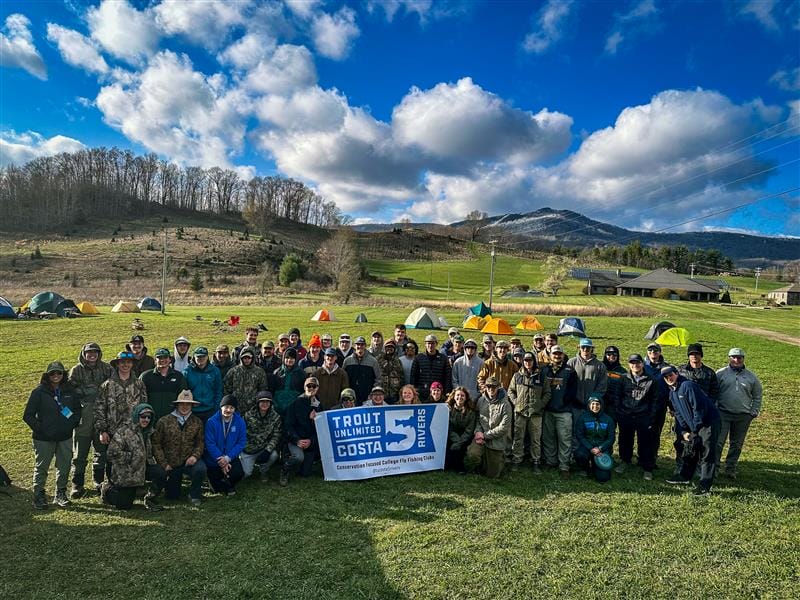
TU’s younger members have also been active. The TU Costa 5 Rivers program held its Southeast Regional Rendezvous at Lees-McRae College in Banner Elk, N.C. in the spring, with more than 70 students from 13 colleges tackling restoration projects along with social and fishing activities.
Schools in the hardest hit areas have been working on restoration since the storm.
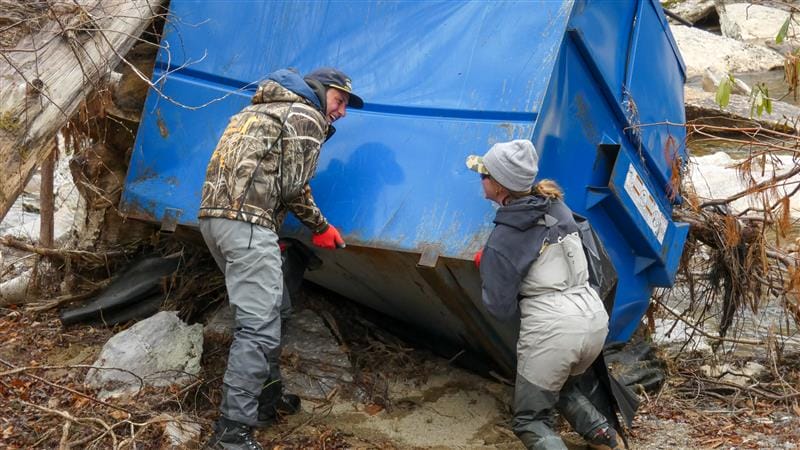
“Since Hurricane Helene, 5 Rivers clubs have rallied to support both one another and the Western North Carolina community,” said Cliff Watson, TU’s youth fly fishing programs manager. “Students from Appalachian State University, Western Carolina University and Lees-McRae College have all taken part in multiple volunteer projects to remove debris, repair streambanks and help to restore coldwater habitat impacted by the storm.”
What about the trout?
Observing the damage that some streams experienced, it’s hard to imagine that trout and other stream dwellers could have survived.
But initial observations have been encouraging.
“Even though some of these streams experienced just unimaginable destruction to the resource, the fish find a way,” said Jake Rash, who oversees the trout program for the North Carolina Wildlife Resources Commission. “It looks like there are fewer fish in most cases, but the fish are still there.”
Since spring, Rash’s team has been busy surveying streams with electrofishing gear.
“We’ve been going non-stop and if we’re not at 200 streams surveyed, we’re really close,” Rash said.
The agency typically surveys about 150 trout streams a year. The focus this year has been on waters in areas most impacted by Helene. Those streams will remain the sampling priority for the next couple of years in order to establish trend data.
“The trout will recover as the habitat continues to recover,” Rash said. “I would expect them to be back to pre-Helene numbers within the next two to three years.”
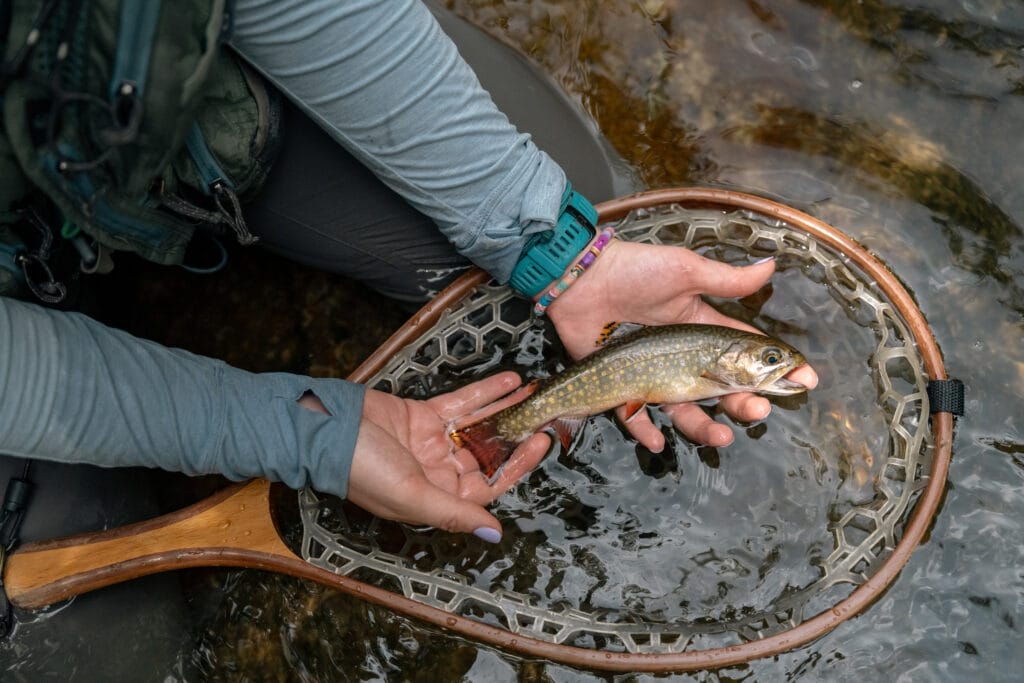
Rash said the impacts vary, sometimes even within watersheds.
“The impacts are not homogenous,” said Rash, noting that even in areas where larger creeks were devastated, trout are still being found in the watershed. “In the main channel there may be nowhere for fish to be, but we’re finding them in small tributaries.”
In conjunction with looking at trout numbers, Rash said there will be a continued focus on temperature monitoring, an effort that has already been underway with support from TU chapters.
“We’re monitoring and thinking about temperature and that’s going to be important for many of these waters, particularly lower elevations that now have open canopies,” Rash said. “Those are the places where tree plantings and other habitat-related conservation projects could go a long way to help trout in the short term and long term.”
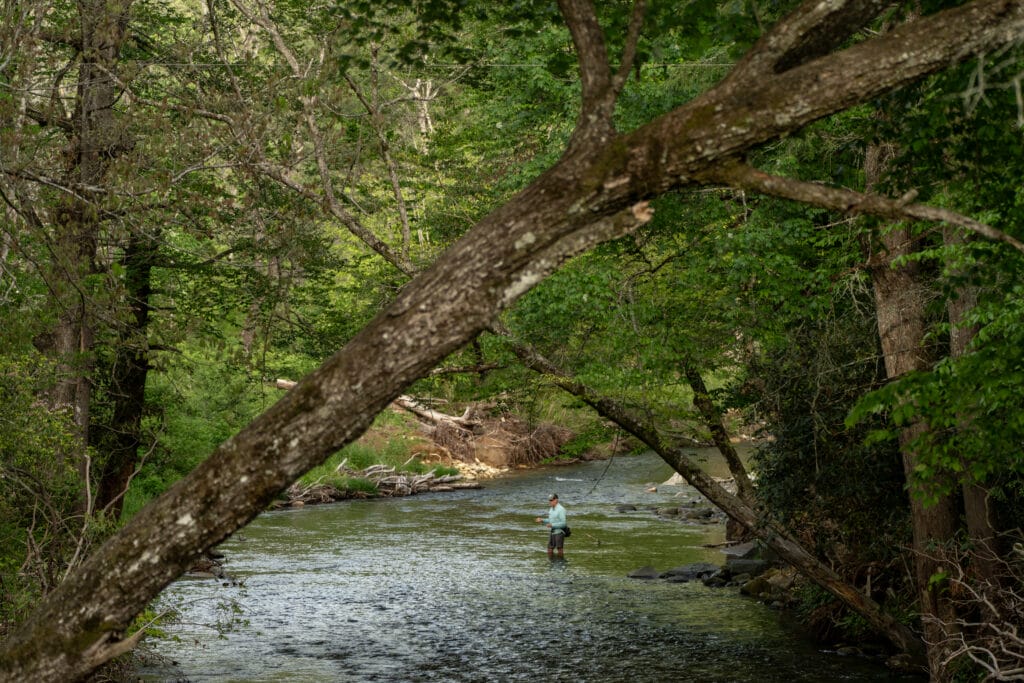
Rash said that in addition to the agency’s formal efforts, informal intel from the angling public is also helping provide insight into fish populations, just another way members of the public have mobilized since the storm.
“A lot of tragic things happened,” he said. “It’s been encouraging to see everyone in the coldwater community pulling together and working toward the same thing. It takes partners like Trout Unlimited and others to do it.
“It’s been tough, but it’s been rewarding to see everyone pull together to get to the other side.”


